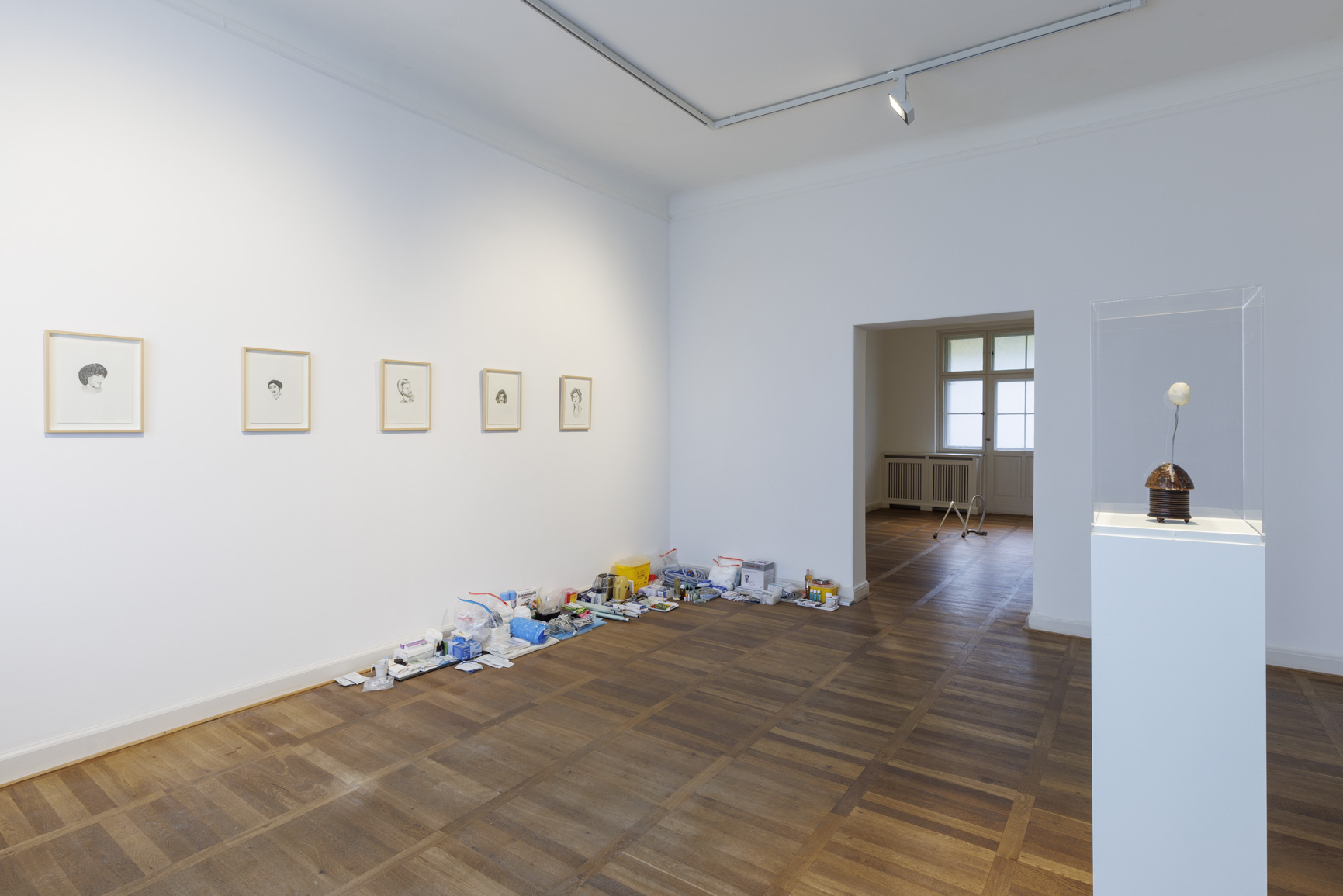
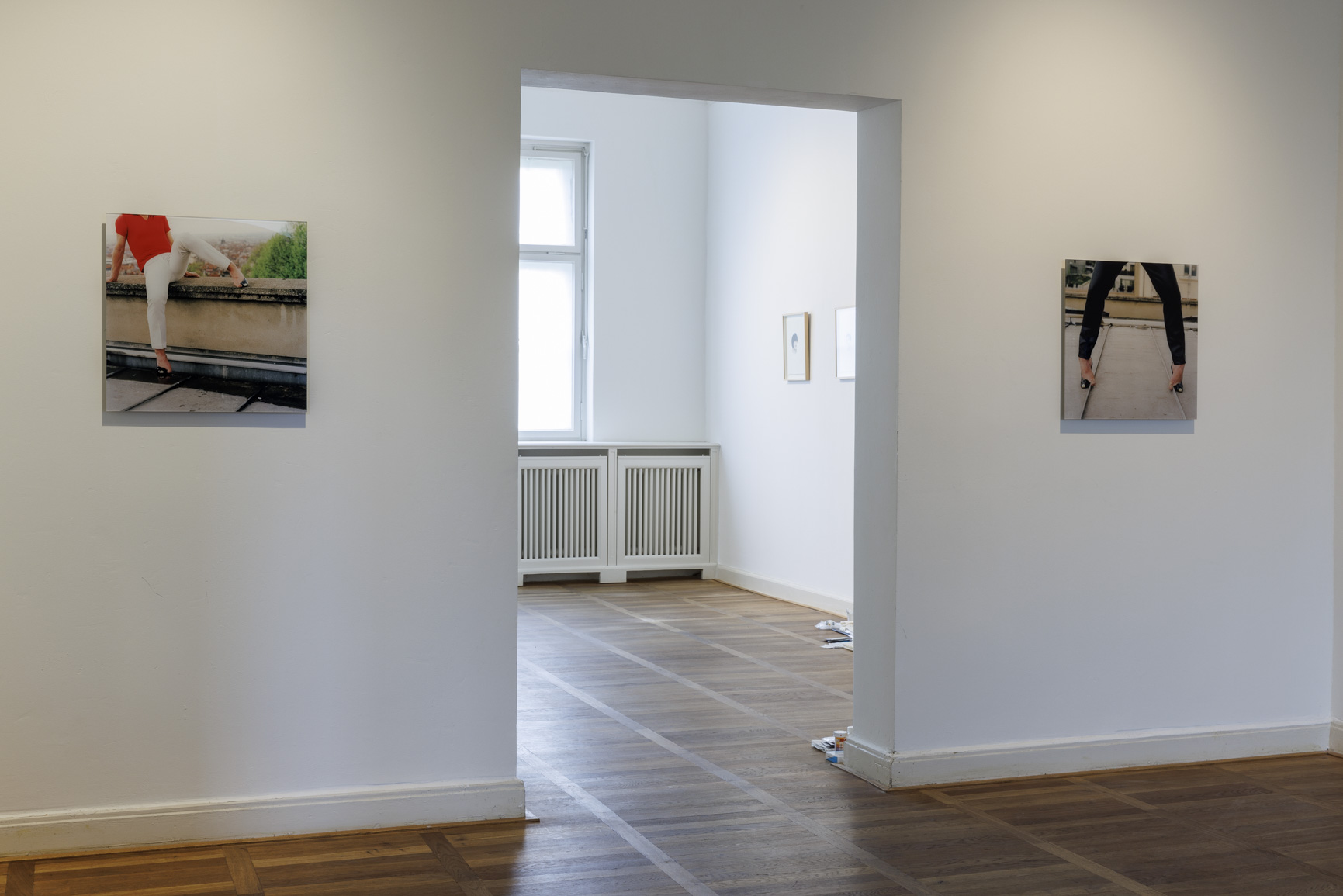
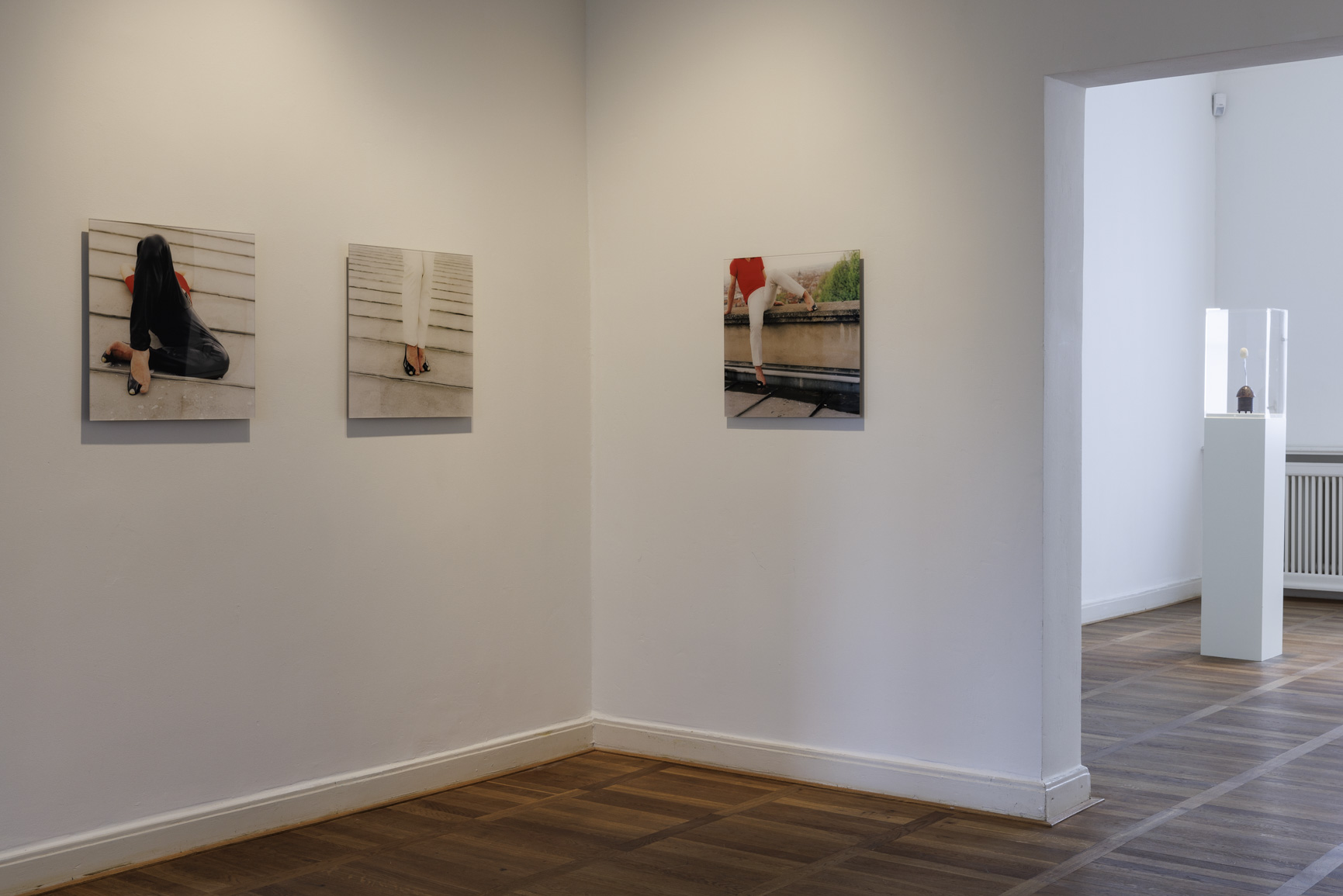
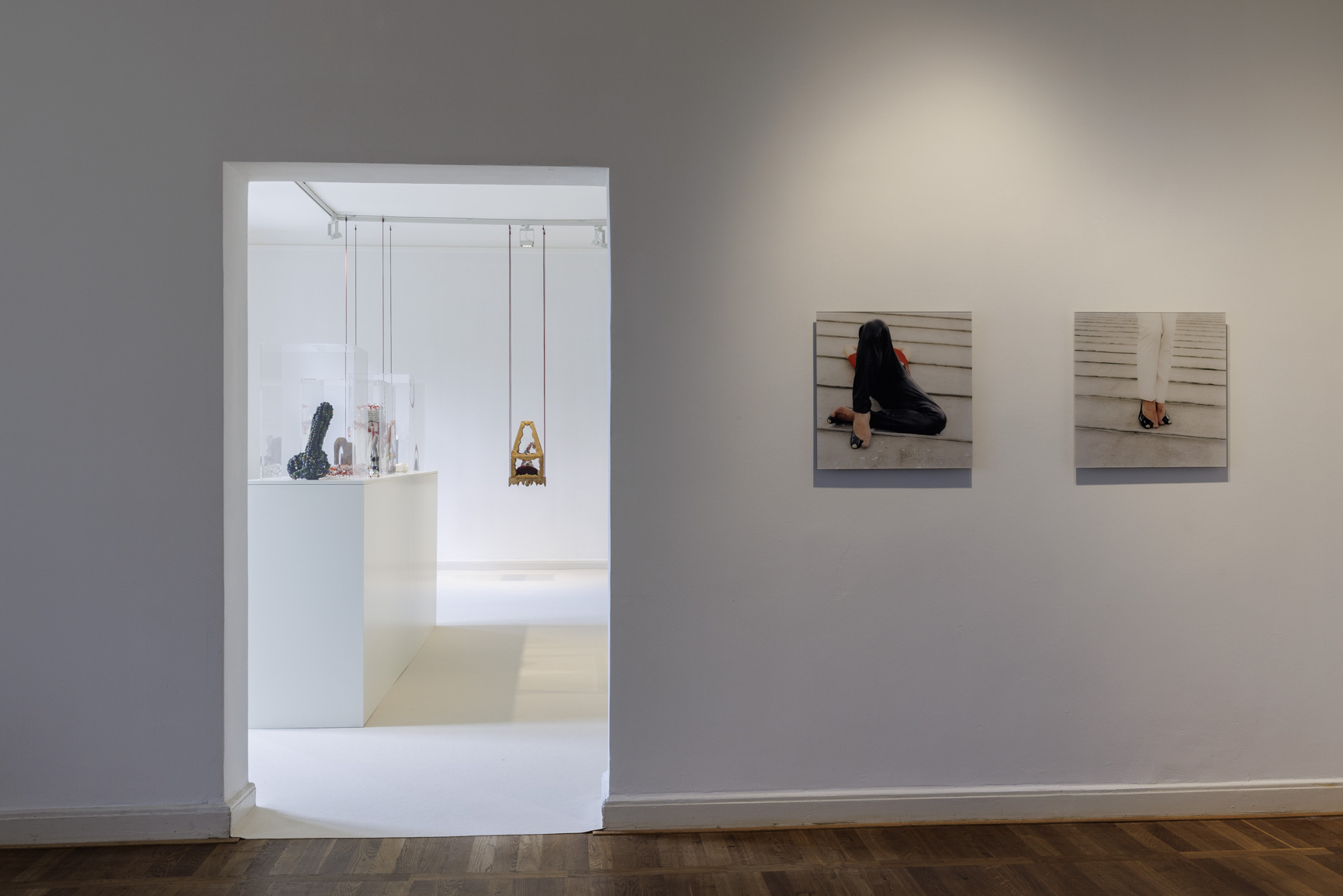
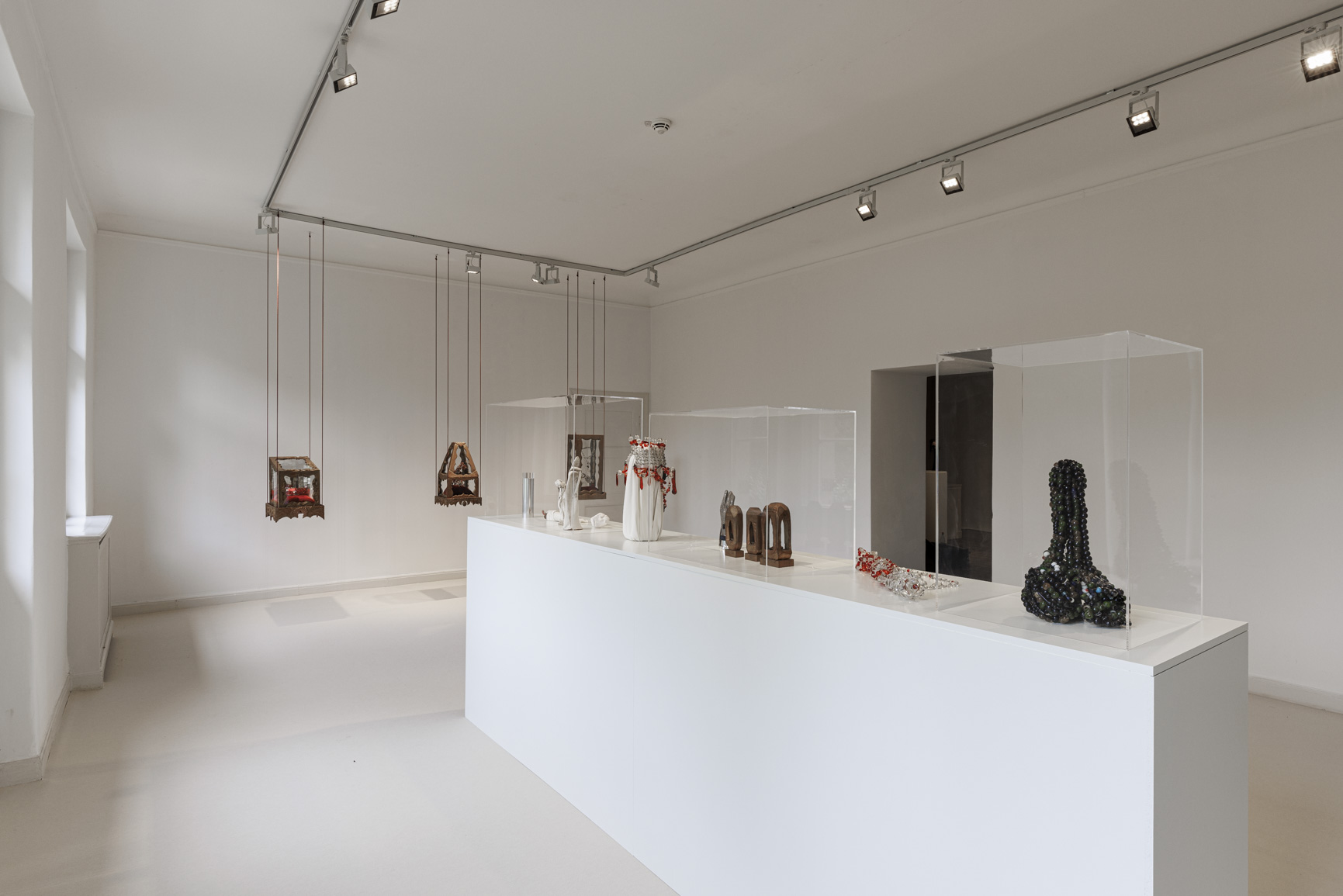
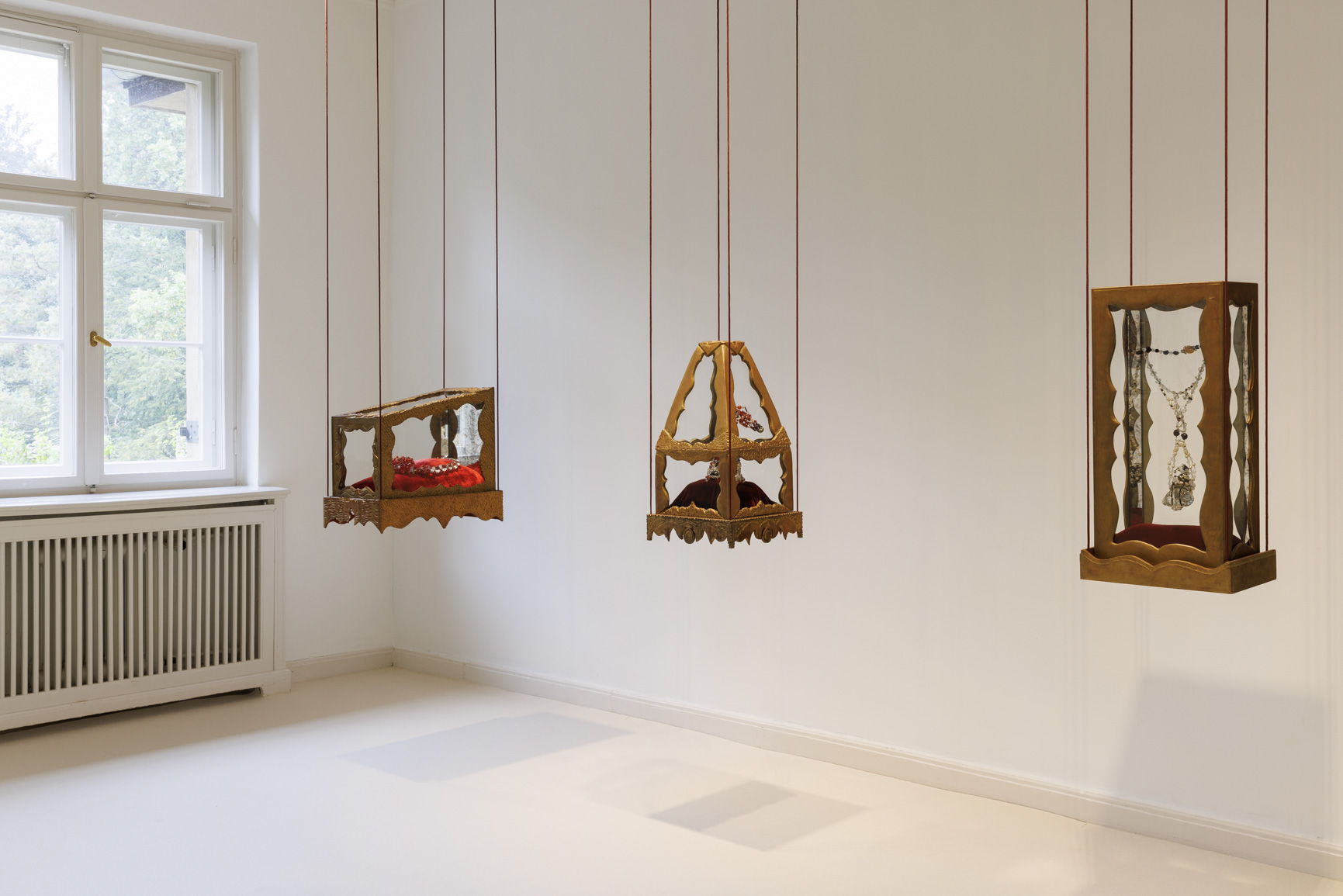
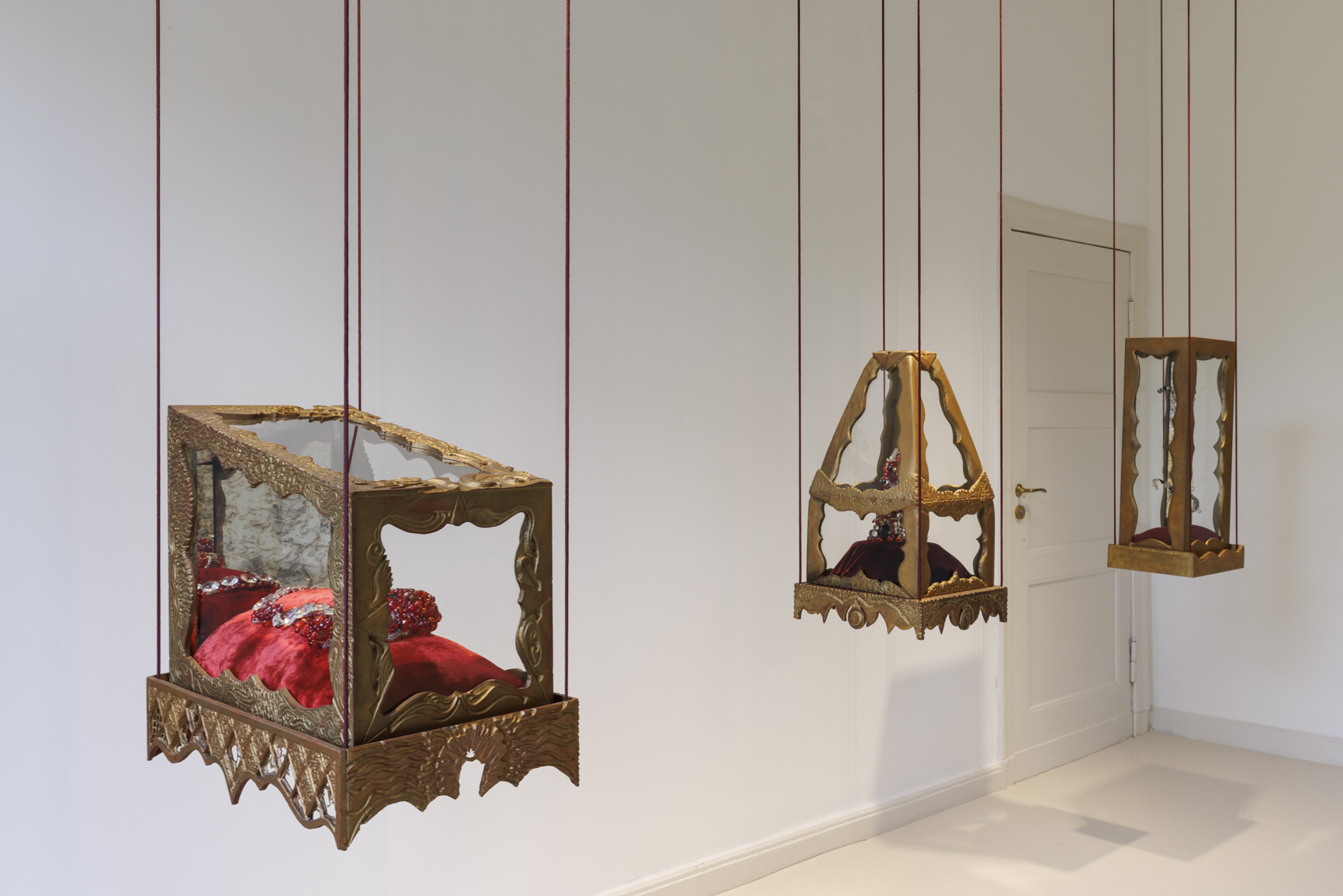
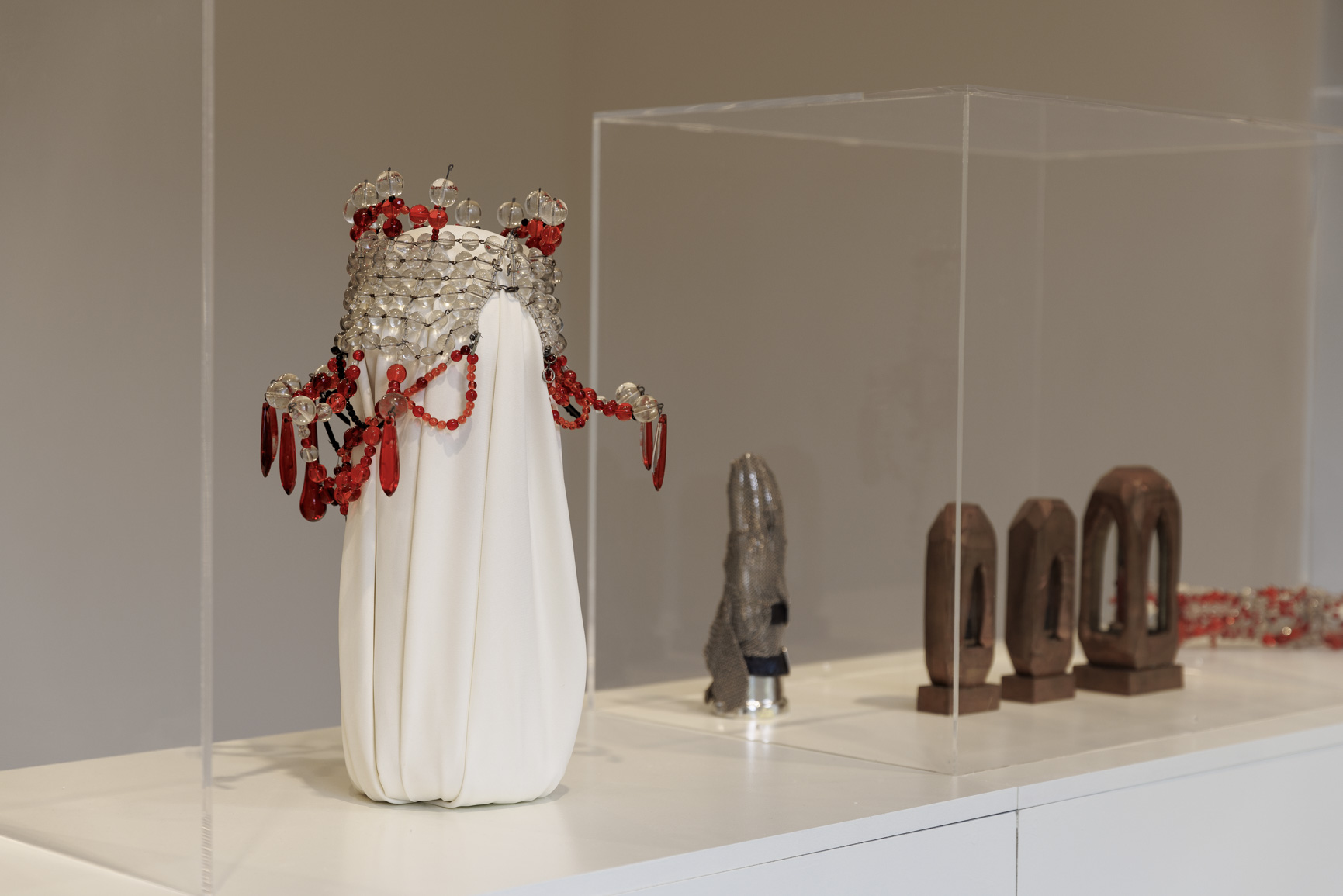
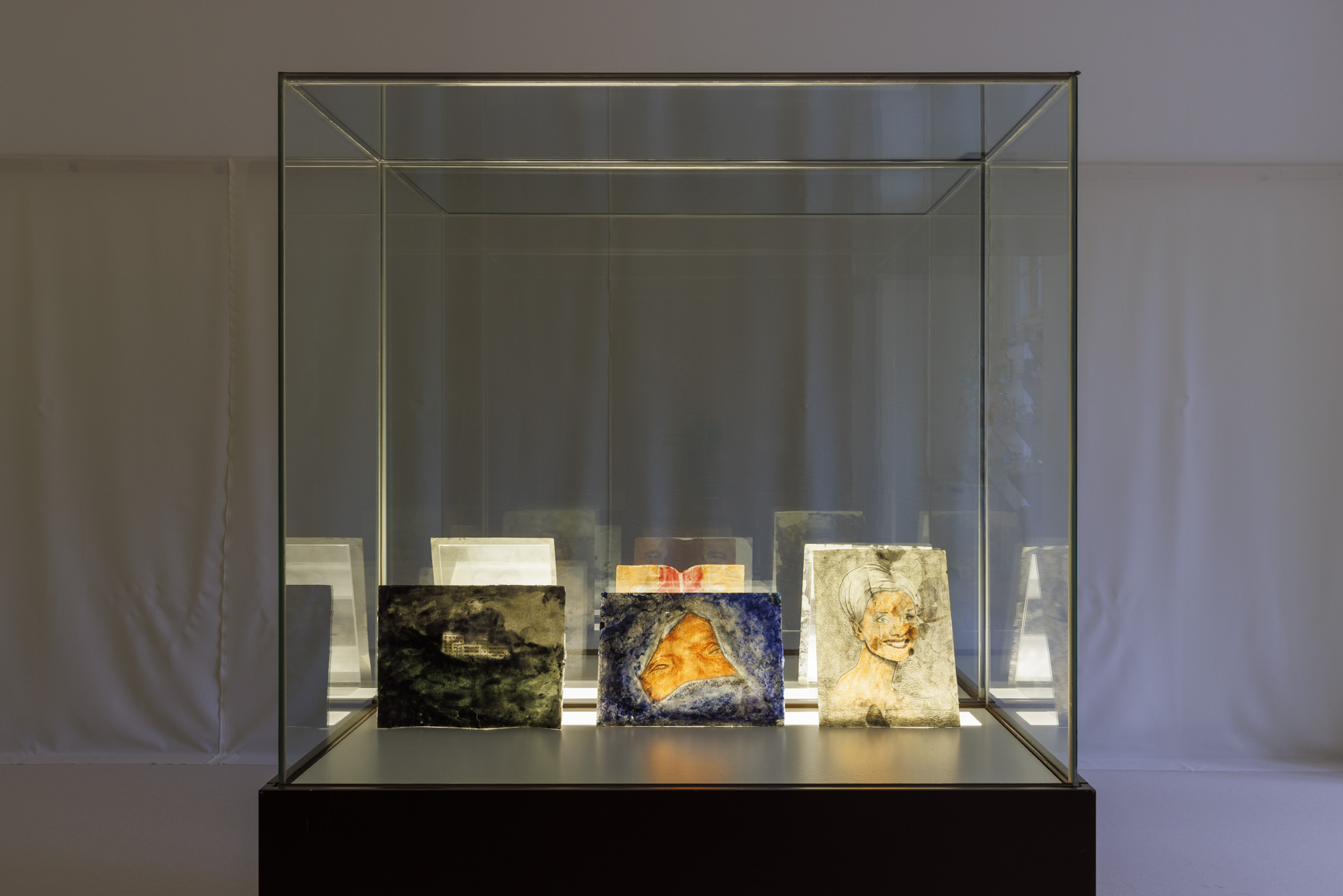
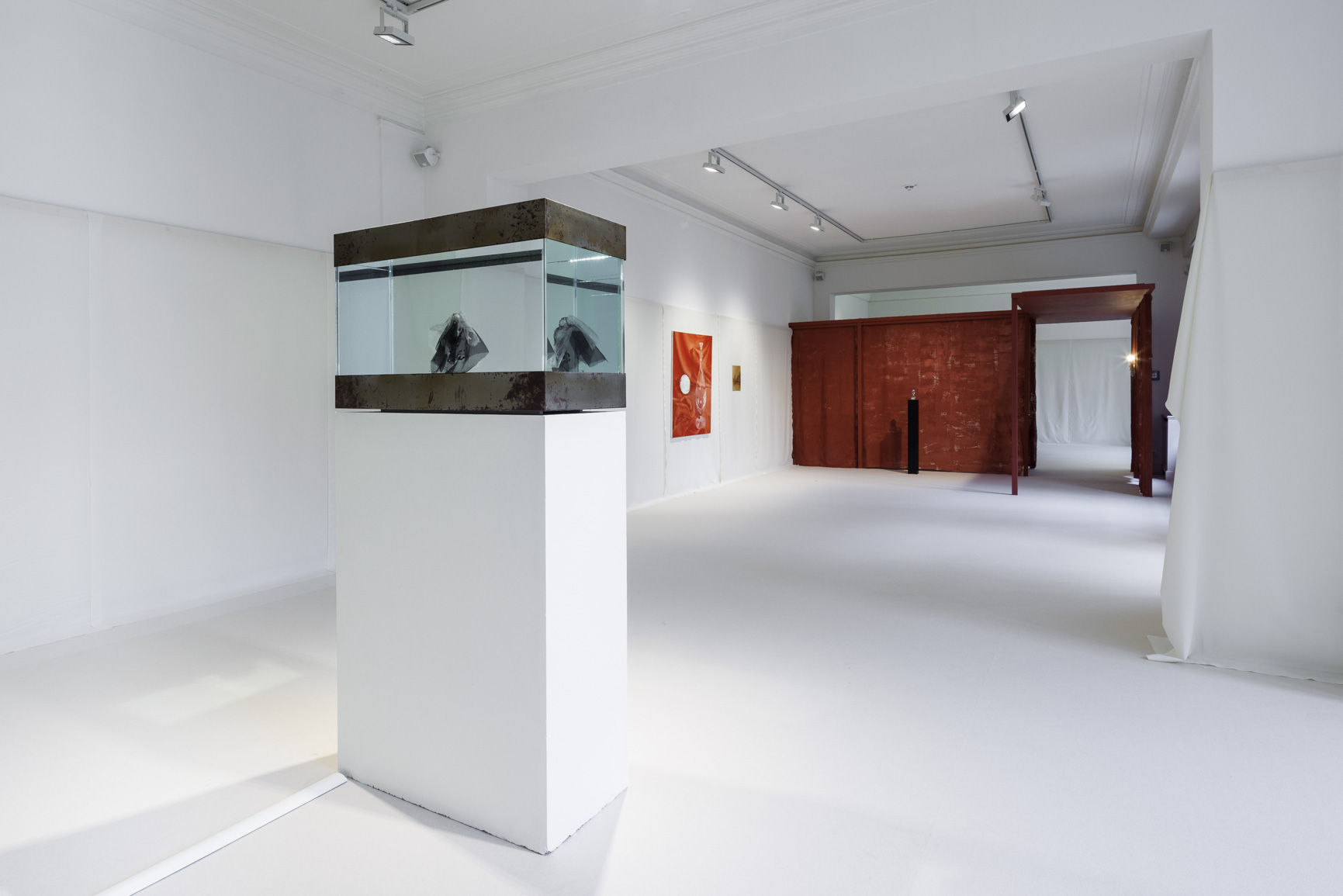
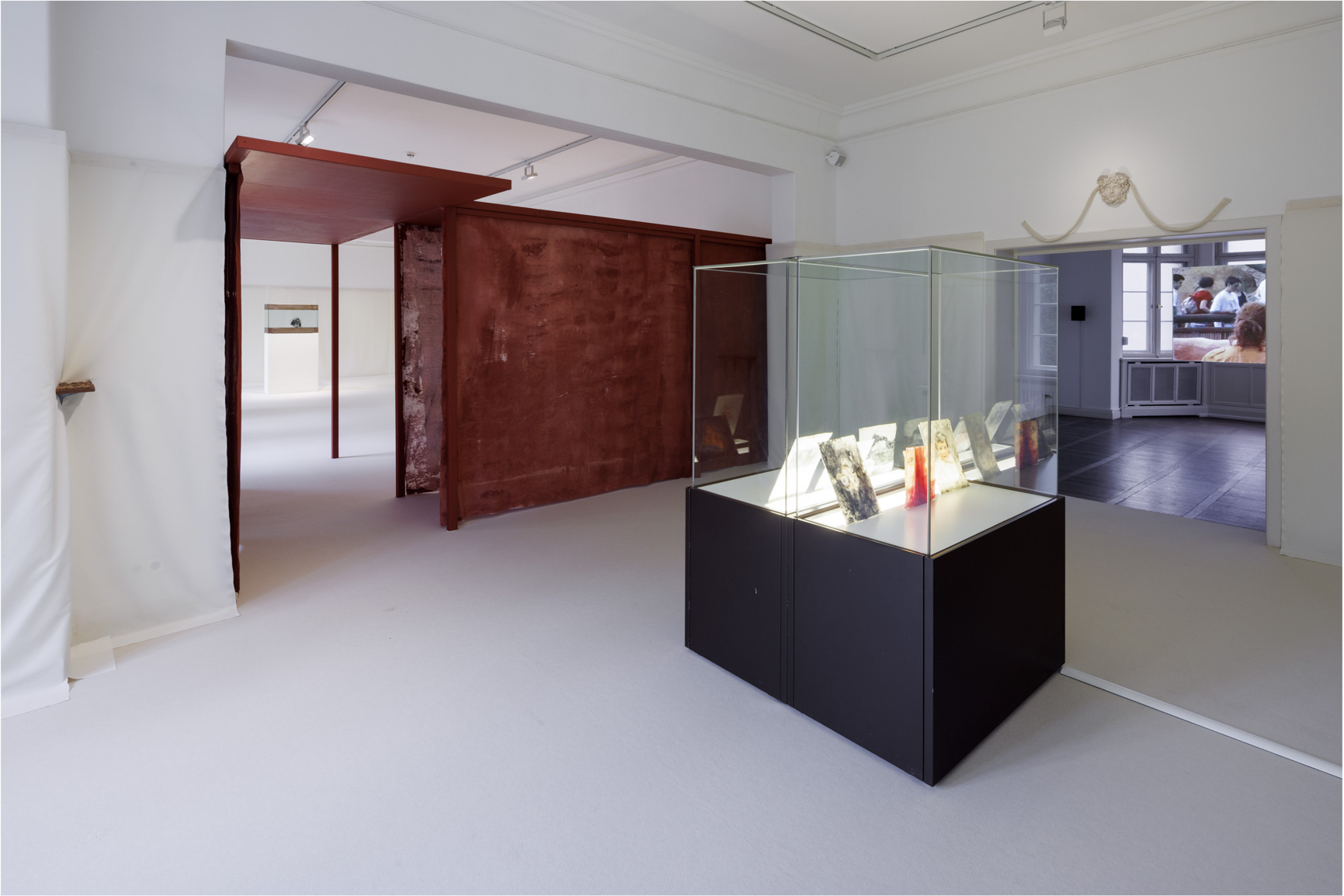
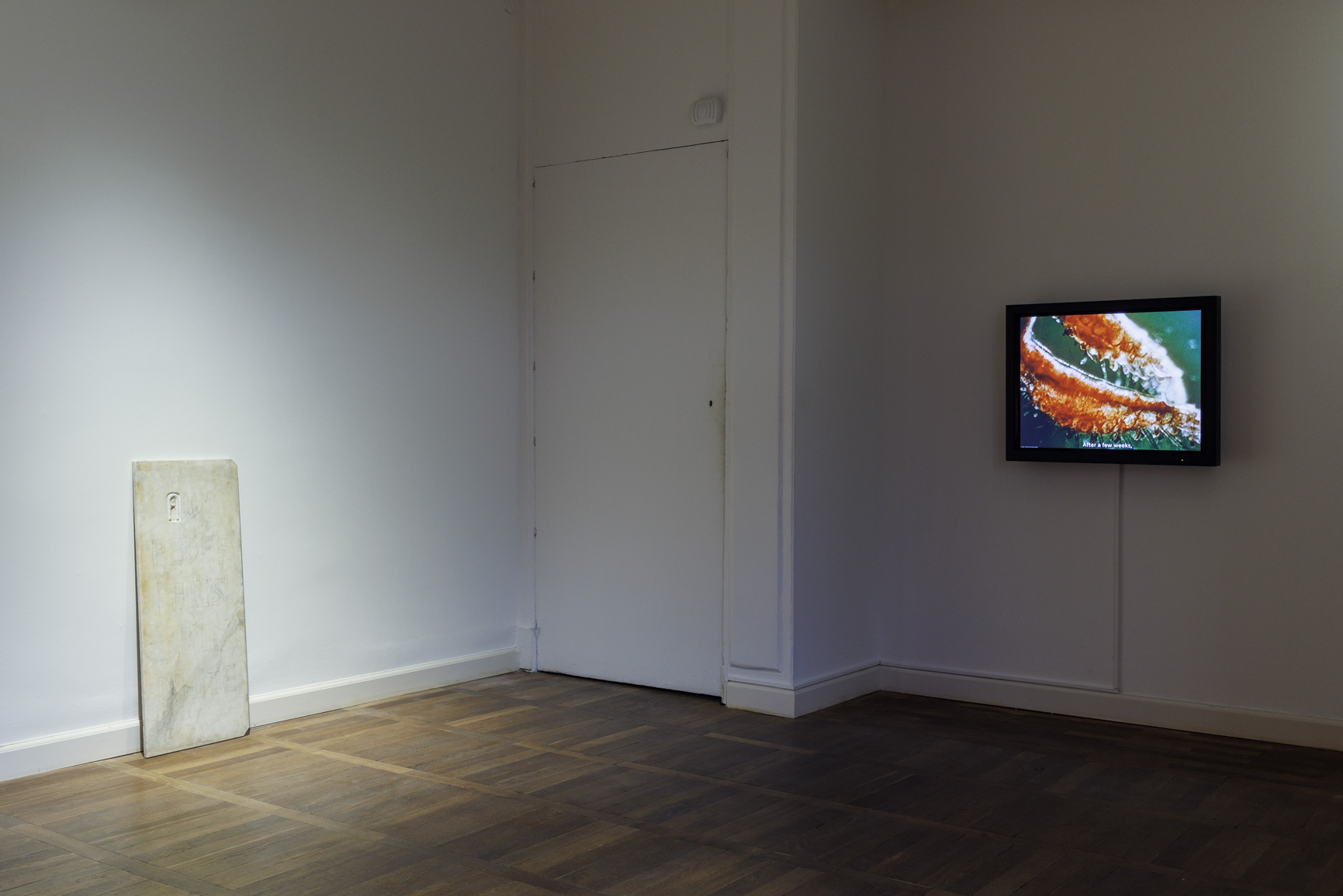
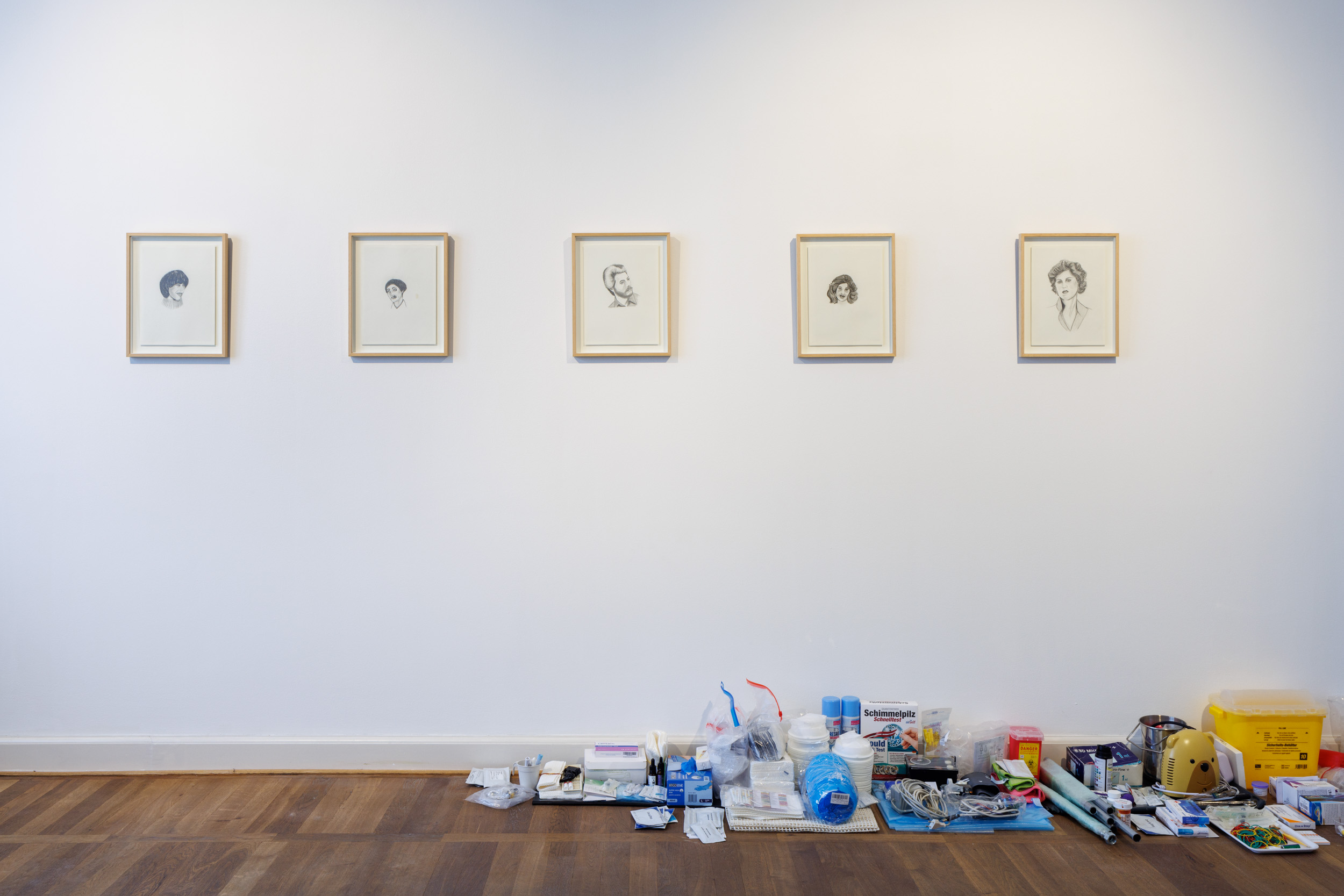
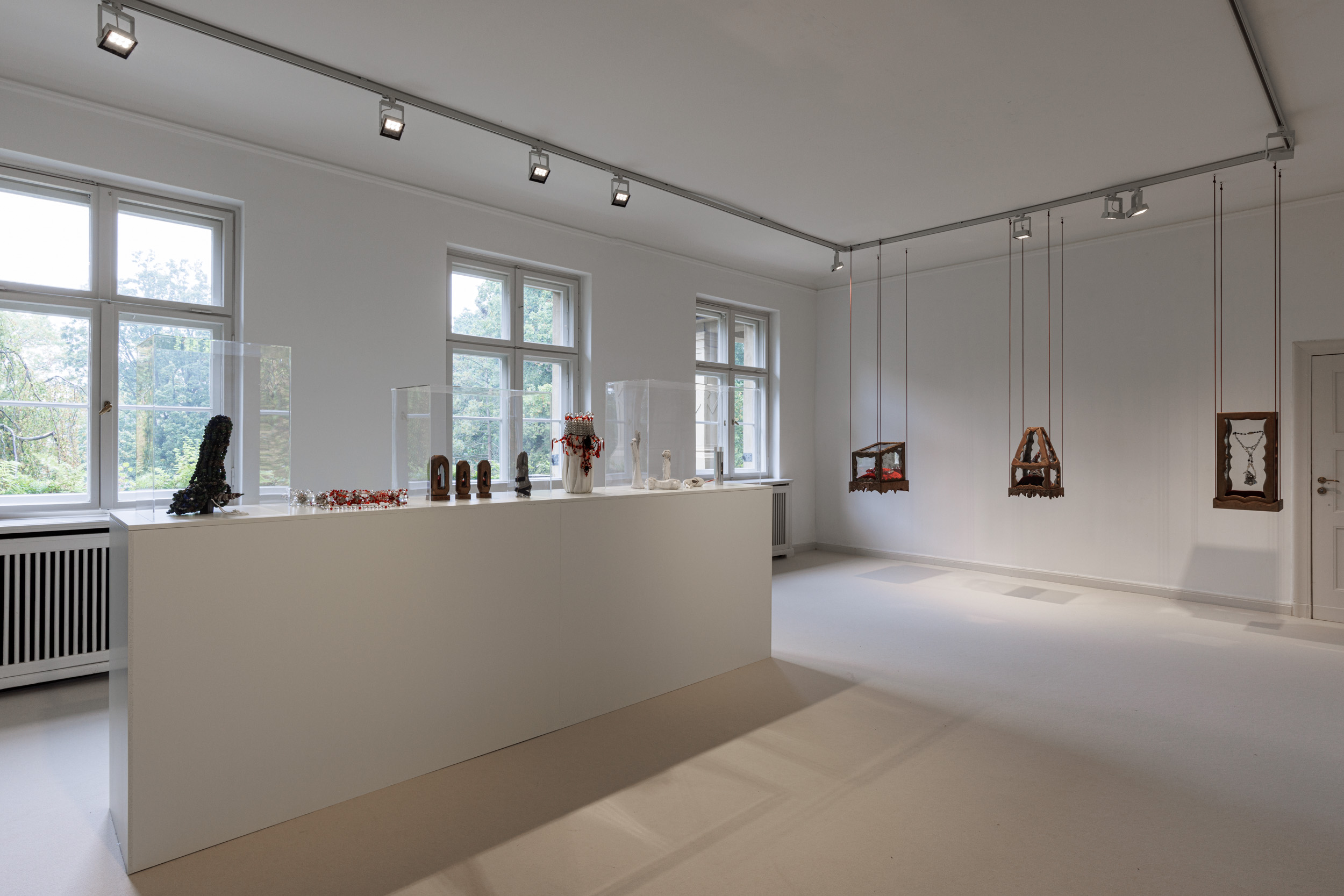
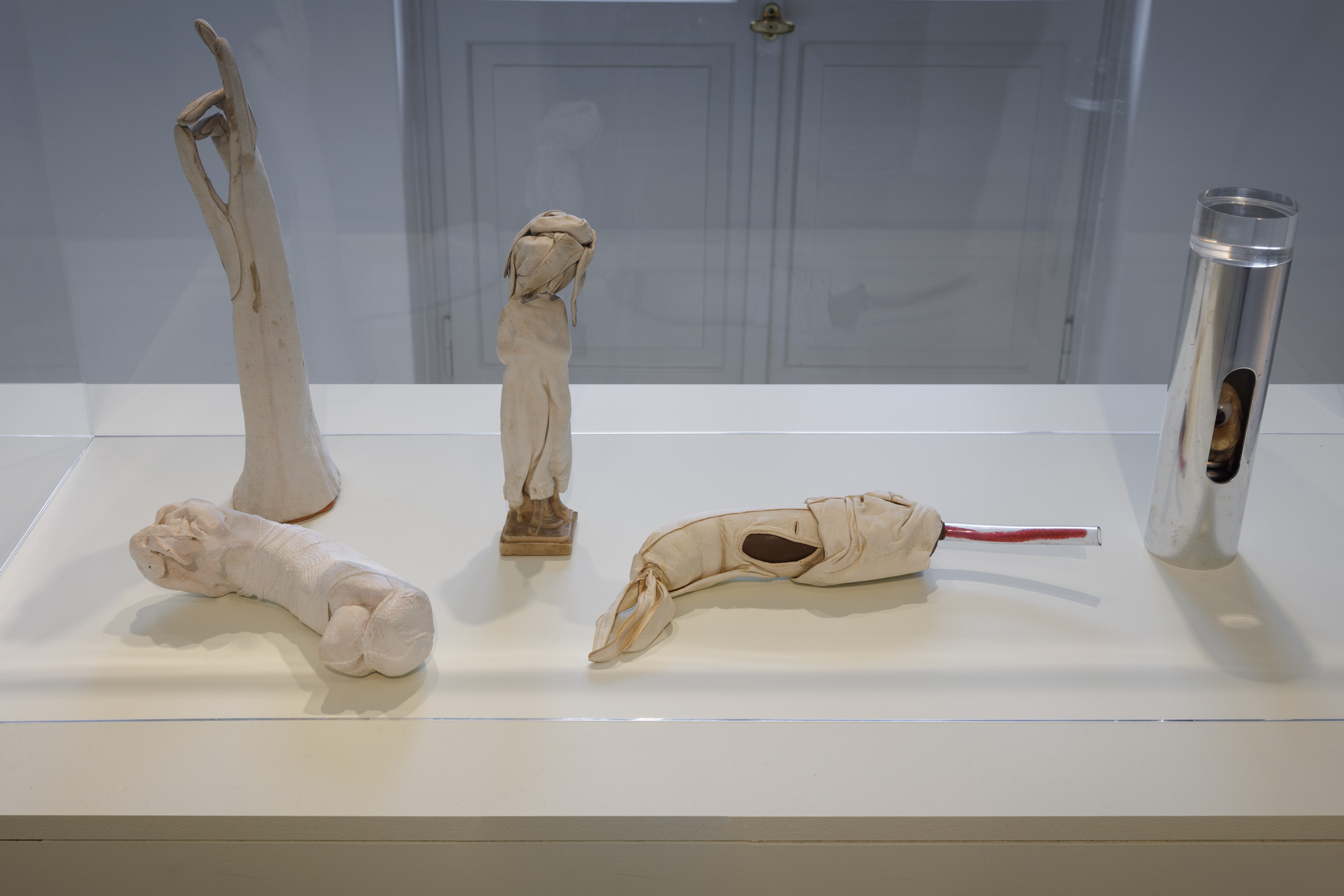
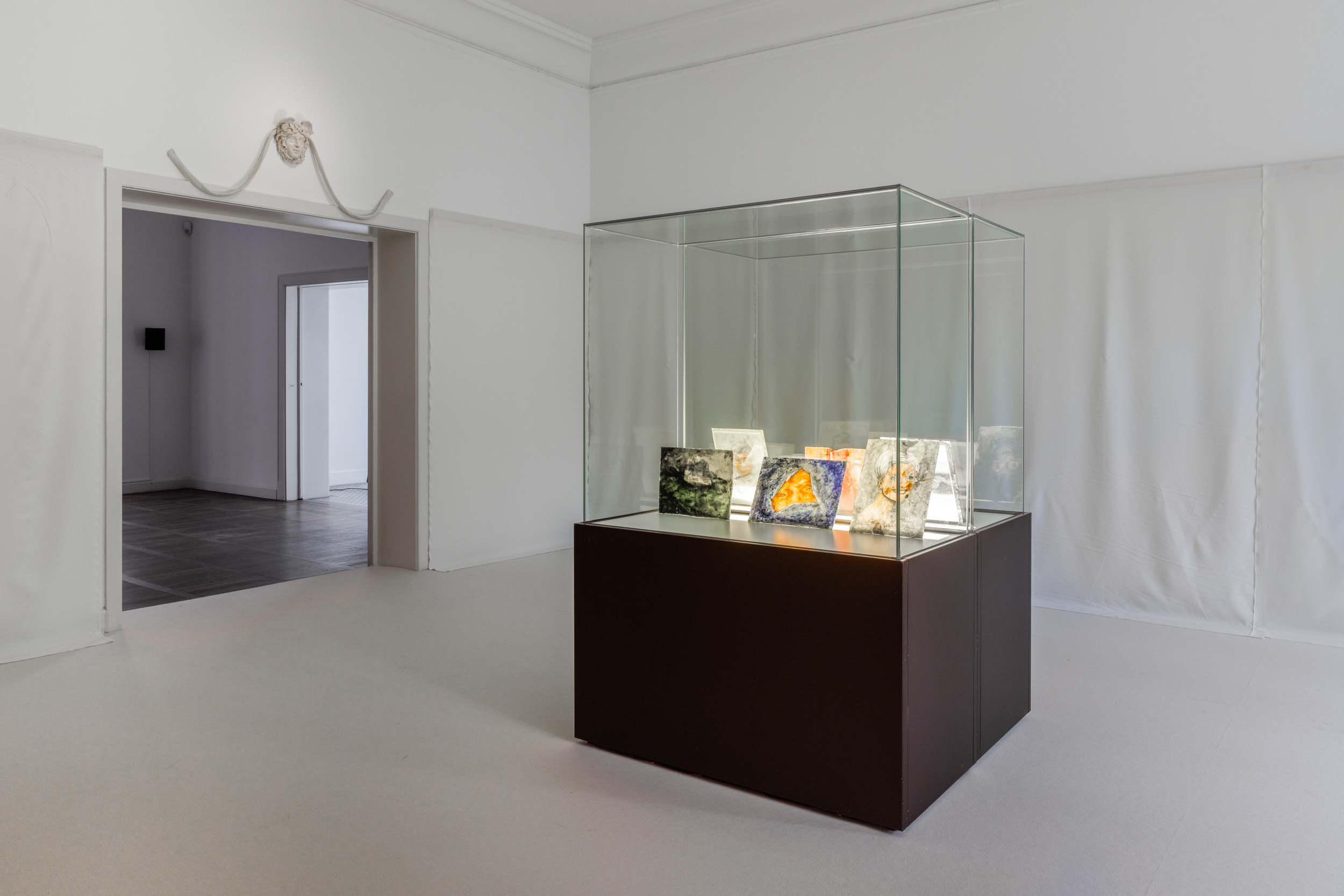
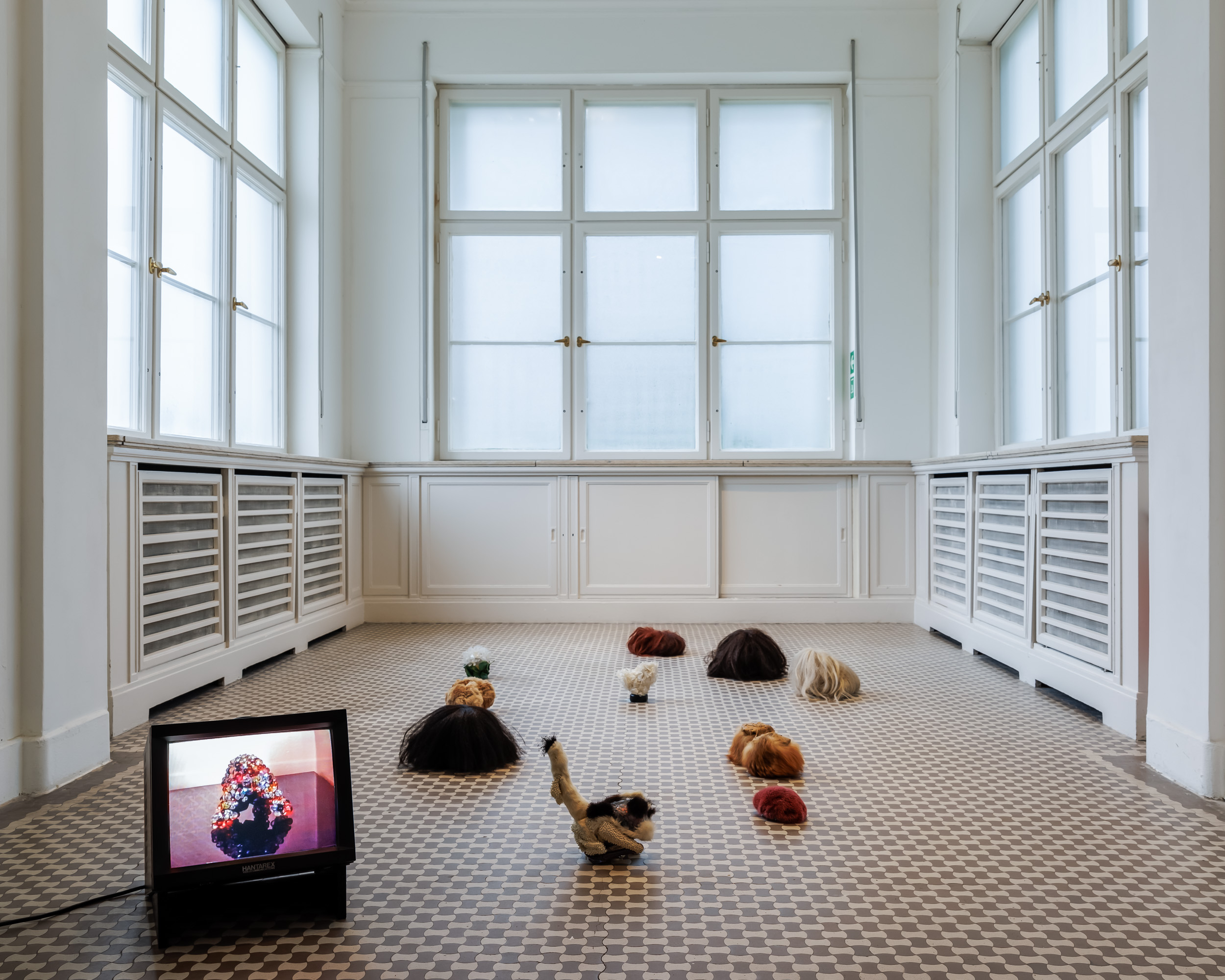

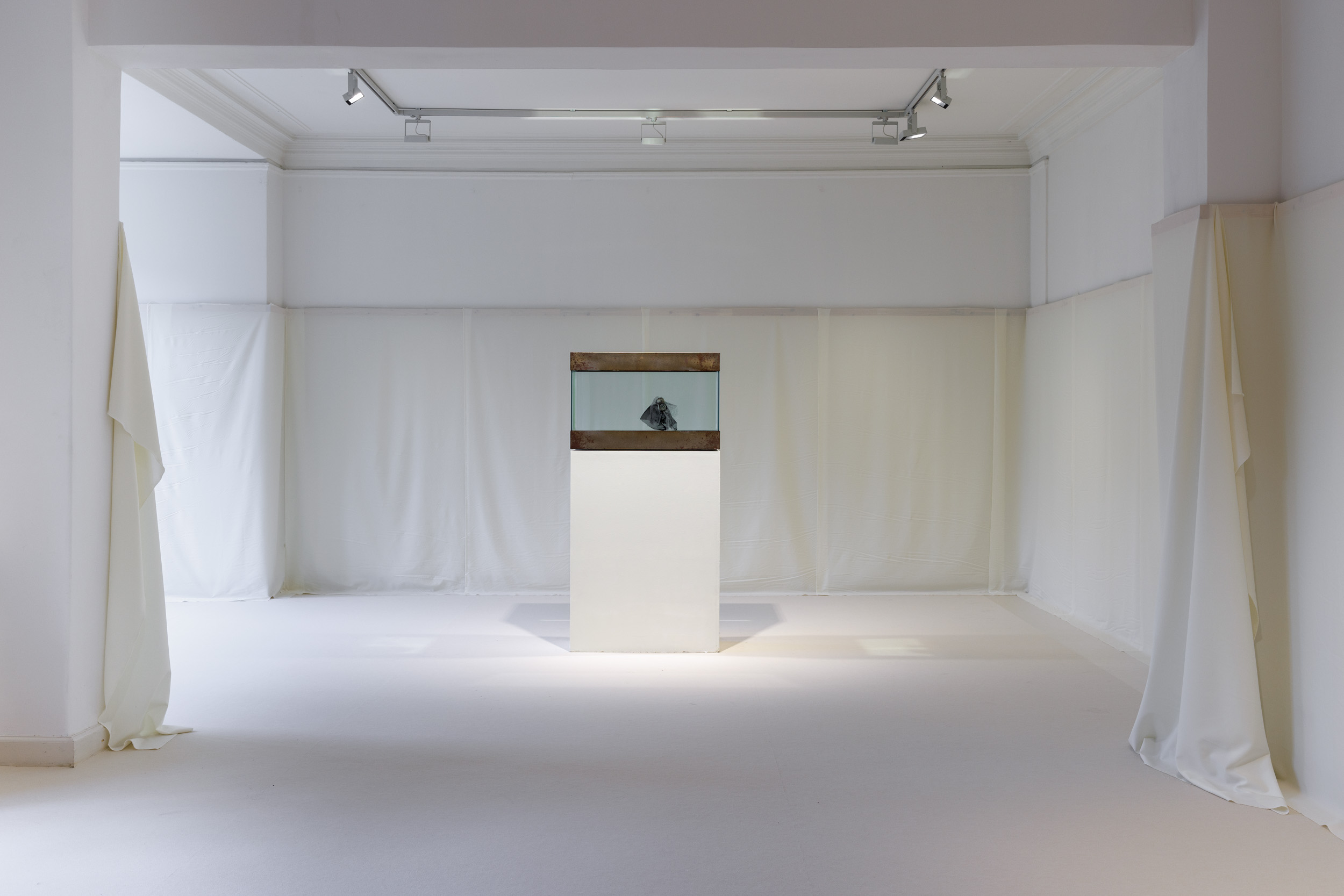
BRUNO PÉLASSY AND THE ORDER OF THE STARFISH
HAUS AM WALDSEE, BERLIN, GERMANY
OCTOBER 20, 2023 — JANUARY 14, 2024
A photograph captures Bruno Pélassy, freshly emerged from the deep blue of Nice’s Coco Beach, wearing a starfish like a living brooch on his chest, consigning him to some secret maritime order. “The blurred distinction between plant and animal that exists so obviously in the sea, as if it offered a perfect metaphor for the philosophical limits of all binary distinctions: good and evil, male and female, night and day, black and white.”, cast a deep fascination on the artist, as Laura Cottingham, curator and close confidante, recalls. It is exactly this dissolution of binaries that is at the heart of Pélassy’s artistic practice.
Bruno Pélassy and the Order of the Starfish is the French artist’s first institutional exhibition in Germany. Pélassy was born in 1966 in Vientiane, Laos, and died in 2002 in Nice at the age of thirty-six. His eccentric, subversive, and at the same time extremely sensual oeuvre rubs shoulders with selected works by other artists. The group exhibition presents contributions by Marc Camille Chaimowicz, Beth Collar, Jesse Darling, Brice Dellsperger, Leonor Fini, Ull Hohn, Natacha Lesueur, Jean Painlevé & Geneviève Hamon, James Richards as well as Soshiro Matsubara, who also devised the exhibition’s architecture.
The group show interacts with Pélassy’s work at various points. The exhibition architecture by Japanese artist Soshiro Matsubara, consisting of labyrinthine fixtures, wall hangings, mirrors, carpets, and a wide variety of Mannerist ceramics and lamps, forms the basis for this exchange. The urgency and relevance of Pélassy’s inquiries in relation to contemporary concerns become apparent through the direct juxtaposition of and interaction between each of the works in the exhibition spaces. In dialogue with Pélassy, the group presentation reflects on the malleability of the body, its transitoriness, as well as on a failing political system in which illness has come to be read as an indicator of social power relations.

|

|

|

|

|

|

|

|

|

|

|

|

|

|

|

|

|

|

|
|
© Frank Sperling